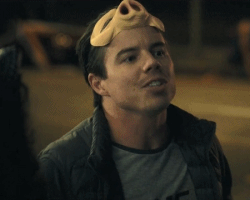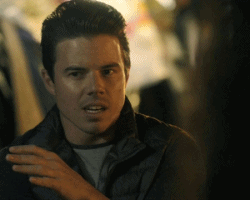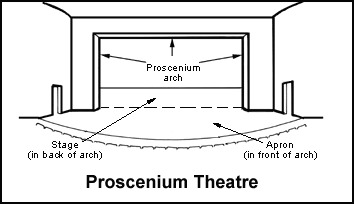#david hull gif set
Text
In the Source Link, you can find a complete gif pack of David Hull as Alan, in the pilot episode 'The Body' of Into the Dark, an anthology season that ran for two seasons, each episode was based on a different holiday and aired monthly.
David Hull is an American actor, mostly known for his role as 'White Josh' in the series Crazy Ex-Girlfriend.
TW: Contains scenes of flashing lights, horror, murder, death.


Source - FabledEnigma
#into the dark#david hull#david hull gif#david hull gifs#david hull gif set#david hull gif pack#gifs#gifs by me#made by me#gif set#gif#into the dark gif#into the dark gifs#into the dark gif pack#into the dark gif set#intothedark#alan#alan the body#alan gif#alan gifs#alan gif set#alan gif pack#creator fabledenigma#fabledenigma#horror#horror series#gifsociety#born 1985#born august#august born
2 notes
·
View notes
Text
David Thacker’s A Doll’s House (1992)
I am a student of the University of Hull blogging as part of my assessment for the module Drama, Conflict and Identity. All views expressed here are my own and do not represent the university.

Adapting Ibsen
Based on the incredible stage play by Henrik Ibsen ‘the father of realism, ‘A Doll’s House’ which was released in December of 1879 was adapted to TV audiences in 1992. A Doll’s House became one of the most performed plays of the early 20th century, which would give the idea that matching this success would be difficult. However, I believe it was beautifully adapted onto the screen by Thacker, remaining extremely faithful to the original content all the while changing dialogue and action to better fit the play into a film.
As previously mentioned, Thacker remained faithful to a multitude of factors from the original play. The film isn’t a modern take on the play, it stays rooted in the patriarchal society of 1879 which I believe helps a modern audience understand and view the patriarchal values held by Torvald and even unseen characters like Nora’s Father which were imprinted into Nora. I feel a modern setting whilst still showing these factors would’ve struggled to highlight them as much as the 19th-century setting does. More examples of Thacker’s faithful adaptation of Ibsen’s work can be found in the still usage of Naturalist factors in the work. For example, the original focused on 5 main characters. This focus allows for them to be individualised and focused on rather than having a spread of characters with a limited time to explore them individually. The media of television even allows us to have a greater insight onto the characters than we might have in the play. For example, the opening scene where Nora returns with an array of items she’s bought, despite being in the room with Torvald the camera often pans to her when she’s playfully moving around, chattering like a squirrel to him. This focus lets us see Nora for what she will later become when she leaves Torvald, we understand that despite what’s been hammered into her she still defies what a ‘proper wife’ should be and plays around to our face in the camera. Staging is also an important factor when trying to turn the limited stage into an expansive film set. Original plays of ‘A Doll’s House’ for example may have had a large imposing door, to stress the decision Nora makes at the end of the play to leave Torvald, how it breaks the ideas set by the patriarchy: “The street door is slammed shut downstairs.”.

(Citing in image description)
However in the film, we never actually see the door slam, we simply hear its impact as the long and winding staircase is shown to show the journey she will embark on as she stops living for other men, and discovers herself. A brilliant portrayal of the impactful scene. Containing the impact within the sound, instead of the action. The media adaptation even allows the original creative set design of Naturalist theatre to be fully utilised, with a camera that can navigate the three-dimensional space that was already created by the semi-circle-like stages that allowed 19th-century audiences to gage the realness and space of A Doll’s Houses set, making it more real and impactful. Now we are literally taken through Nora and Torvald’s house instead.

Challenging Identity
Nora is a character who relates directly to the idea of challenging identity, and breaking stereotypes and cycles, since she’s been stuck in one herself. The scene in which Nora realises this and expresses her feelings to both Torvald and in a way her deceased father isn’t just a brilliantly adapted scene but is also incredible within the original material. From Ibsen’s ‘A great wrong has been done to me’, to Thacker’s ‘I have been greatly wronged, Torvald.’. Both versions of this scene directly encapsulate the title of the play, ‘A Doll’s House’. Nora expresses her feelings on both the impacts of her father and Torvald, how all she’s done is played the role of their doll, their daughter and wife. ‘I’ve been your doll child here just as I’ve been papa’s doll child at home’ and ‘I’ve been your doll-wife, just as I used to be papa’s doll-child.’ These two slightly different versions of the same line from the play and film is the moment that Nora breaks away.

The tarantella dance that she previously performs, she realises was like Torvald puppeting her for his amusement, the dance itself was a dance supposedly performed to shake the poison of a spider bite from the body. In that similar sense, she’s turned the dance from an amusement to Torvald to now her shaking his and her father’s influence from herself and thus adding to why she’s able to slam the door shut not just on the house but on the very foundation of their marriage. Torvald even claims when Nora stresses her point that ‘Playtime shall be over, and lesson-time shall begin.’ Not only admits how he’s been amusing himself but further preaches that he shall still be the one to teach her, showing still that he is trying to influence her and change Nora to his own liking. In the original play, Torvald responds to these comments by claiming that she’s a ‘blind, foolish woman’, however, I believe it’s the film’s version of the line which reflects Torvald’s true opinions even more, calling her a ‘poor blind, inexperienced creature.’ This line alone summarises his view of what she is, and what he’s always referred to Nora as throughout the play, a ‘creature’ or more specifically his constant re-iteration of a bird. A small creature he keeps in a cage, to feed and look after. As a woman not just in ‘his’ society, but ‘his’ house he feels she can know no better, but Nora breaks through this and still leaves him.

The slamming of the door is like the shattering of her previous identity as just a woman, doll, or creature, now she can finally move on and become her own being, not classified by anything anybody wants her to be: “I believe that before all else I am a reasonable human being, just as you are- or, at all events, that I must try and become one.’ Ibsen and Thacker both want us to break the stereotypes and identities that we’re locked in, and do it beautifully through Nora. ‘Ibsen’s message to you is – if you are a member of society, defy it; if you have a duty, violate it, if you have a sacred tie, break it, if you have a religion, stand on it instead of crouching under it.’ According to AS Byatt with the Guardian Newspaper, Ibsen once wrote: "A mother in modern society, like certain insects, retires and dies once she has done her duty by propagating the race." Ibsen was an incredible Naturalist playwright who in a time when many may have gone against his ideals, still spoke them through the means of his art.
Bibliography
Ibsen, H. and Duncan, S. (2020) A Doll’s House (Student Editions). London: Methuen Drama; 3rd edition.
A Doll’s House (1992) Directed by David Thacker. BBC 2
No artist or date is stated for Proscenium Theatre figure. Can be accessed on: https://sites.google.com/site/kelleytheatrescavengerhunt/home/proscenium-theatre
AS Byatt (2009) Blaming Nora. The Guardian. Available online: https://www.theguardian.com/stage/2009/may/02/ibsen-a-dolls-house [Accessed: 25th March 2023]
1 note
·
View note